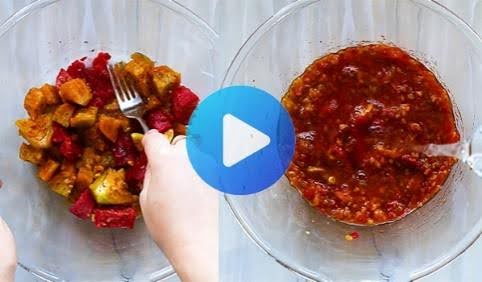Losing weight can feel like a big challenge, especially when you are trying to stick to a budget. Many fancy diets and meal plans cost a lot of money. But I want to share a simple, tasty, and affordable tool that can help you on your journey: smoothies. Yes, those blended drinks can be powerful allies in reaching your weight goals without emptying your wallet.
I have worked with many women who found success by adding smoothies to their routine. It is not about drinking only smoothies, but about using them smartly as part of a balanced eating plan. Let us explore how smoothies can support weight loss, how to make them budget-friendly, and what makes a truly healthy blend.
What Are Smoothies Anyway?
At its simplest, a smoothie is a drink made from blended raw fruit, vegetables, and sometimes other ingredients like yogurt, milk, seeds, or protein powder. You toss everything into a blender, whiz it up, and you have got a thick, often creamy drink.
The great thing about smoothies is how versatile they are. You can customize them endlessly based on what you like, what is in season, and what your body needs. This makes them a fun and easy way to get lots of nutrients packed into one glass.
How Can Smoothies Help with Weight Loss?
You might wonder how a drink can help you lose weight. It seems simple, but there are several reasons why smoothies can be effective.
Packed with Nutrients
When you make a smoothie with the right ingredients, you are getting a concentrated dose of vitamins, minerals, and fiber. Fruits and vegetables are nutritional powerhouses. Blending them makes it easier for your body to absorb these good things. Getting enough nutrients is important when you are losing weight to keep your body functioning well and maintain energy levels. Many women I work with find they feel more energetic when they start their day with a nutrient-dense smoothie.
High in Fiber
Fiber is a superstar for weight loss. It comes from plant-based foods like fruits, vegetables, oats, and seeds – all common smoothie ingredients. Fiber helps you feel full and satisfied after eating. This feeling of fullness, called satiety, can prevent you from overeating later in the day. Fiber also helps keep your digestive system running smoothly, which is crucial for overall health. Think about adding spinach, kale, berries, chia seeds, or flax seeds to boost the fiber content.
Controlling Calories
Smoothies can be relatively low in calories compared to many traditional meals, especially breakfast options like pastries or sugary cereals, or even some restaurant lunches. By controlling the ingredients, you control the calories. You can create a filling smoothie for under 400 calories that keeps you satisfied for hours. This helps you stay within your daily calorie goal for weight loss without feeling deprived.
Managing Cravings
Do you struggle with a sweet tooth? Smoothies can help. The natural sweetness from fruits can satisfy cravings for sugary snacks or desserts in a much healthier way. Blending fruit makes its natural sugars easier for your body to handle compared to the refined sugars found in processed foods. Adding a source of protein or healthy fat can also help stabilize blood sugar levels, further reducing cravings.
Convenience Factor
Let us be honest, life gets busy. Finding time to prepare healthy meals can be tough. Smoothies are incredibly quick and easy to make. You can whip one up in minutes, making them perfect for busy mornings or a quick lunch. You can even prepare smoothie packs ahead of time by portioning ingredients into bags and freezing them. Just grab a bag, add liquid, blend, and go. This convenience makes it easier to stick to your healthy eating plan even on hectic days.
Making Smoothies Your Budget-Friendly Friend
Okay, so smoothies can be healthy, but what about the cost? Some pre-made smoothies or smoothie shops can be expensive. And buying fresh berries out of season can definitely add up. But making smoothies at home can be very affordable if you plan it right.
Use Frozen Fruits and Vegetables
Frozen produce is often cheaper than fresh, especially for items like berries, mangoes, and peaches. The great news is that fruits and vegetables are usually frozen at their peak ripeness, so they retain most of their nutrients. Sometimes, frozen options are even more nutritious than fresh ones that have traveled long distances. Frozen fruits also give your smoothie a thick, frosty texture without needing ice, which can water down the flavor. Look for large bags of frozen mixed berries or single fruits – they often offer the best value. You can also freeze fresh produce yourself when it is on sale or in season. Bananas that are getting too ripe? Peel, chop, and freeze them for future smoothies. Got extra spinach? Freeze it too.
Buy in Season
Fresh fruits and vegetables are usually cheapest when they are in season. Check your local grocery store flyers or visit a farmer’s market to see what is available and affordable. Plan your smoothies around seasonal produce. Apples and pears in the fall, citrus in the winter, berries in the summer. This not only saves money but also adds variety to your diet.
Utilize Affordable Staples
Build your smoothies around budget-friendly base ingredients. Bananas are almost always inexpensive and add creaminess and sweetness. Oats are another cheap and filling addition that boosts fiber. Carrots and spinach are usually affordable greens. Water or unsweetened almond milk (often cheaper when bought in larger cartons) can be cost-effective liquid bases.
Buy in Bulk (Smartly)
Items like oats, chia seeds, flax seeds, and protein powder can be cheaper per serving when bought in larger quantities. However, only buy in bulk if you know you will use the ingredient before it expires or goes bad. Store seeds in the refrigerator or freezer to extend their shelf life.
Grow Your Own
If you have space, even a small windowsill, consider growing some of your own smoothie ingredients. Herbs like mint or basil add flavor, and leafy greens like spinach or kale can be grown in pots. It might not supply all your needs, but it can save some money and add freshness.
Building the Perfect Weight Loss Smoothie
Not all smoothies are created equal. A smoothie loaded with sugar, unhealthy fats, and too many calories will not help you lose weight. Here is my guide to building a balanced, weight-loss-friendly smoothie:
Start with a Liquid Base
Choose low-calorie, unsweetened liquids.
- Water: Zero calories, free.
- Unsweetened Almond Milk: Low in calories, mild flavor.
- Unsweetened Soy Milk: Higher in protein than almond milk.
- Unsweetened Cashew Milk: Creamy, low in calories.
- Green Tea (cooled): Adds antioxidants.
- Coconut Water: Provides electrolytes, but check for added sugar. Use in moderation due to natural sugars.
Avoid fruit juices as your primary liquid base, as they add a lot of sugar and calories without the fiber of whole fruit.
You Might Be Interested In: Learning more about The Complete Smoothie Detox & Weight Loss Program
Add Fruits (Focus on Low Sugar)
Fruits provide natural sweetness, vitamins, and fiber. Aim for about 1 cup per smoothie.
- Berries (Strawberries, Blueberries, Raspberries, Blackberries): Lower in sugar, high in antioxidants and fiber. Frozen berries work great.
- Peaches, Plums, Apricots: Good sources of vitamins.
- Apples, Pears: Good fiber source, pair well with greens.
- Melon (Cantaloupe, Honeydew): High water content, refreshing.
Use higher-sugar fruits like bananas, mangoes, pineapple, and grapes in smaller amounts (like half a banana) to control the overall sugar content.
Pack in the Vegetables (Especially Leafy Greens)
This is where you can really boost the nutrient density without adding many calories or sugar. Aim for 1-2 large handfuls.
- Spinach: Mild flavor, you likely will not even taste it. Packed with iron and vitamins.
- Kale: Stronger flavor, very nutrient-dense. Remove tough stems.
- Romaine Lettuce: Mild, adds water content.
- Cucumber: Hydrating, refreshing, low calorie.
- Zucchini (raw or steamed/frozen): Adds creaminess with a neutral flavor.
- Carrots: Add natural sweetness and Vitamin A.
- Beets (cooked or raw): Earthy flavor, vibrant color, good for blood flow. Start small.
- Cauliflower (steamed/frozen): Adds incredible creaminess with almost no taste. Trust me on this one.
Include Protein Power
Protein is essential for weight loss. It helps build and maintain muscle mass (which burns more calories), keeps you feeling full longer, and helps stabilize blood sugar. Aim for 15-25 grams of protein per smoothie, especially if using it as a meal replacement.
- Plain Greek Yogurt: High in protein, adds creaminess. Choose plain to avoid added sugars.
- Cottage Cheese: Another high-protein dairy option, surprisingly good in smoothies.
- Protein Powder (Whey, Casein, Soy, Pea, Hemp): A convenient way to boost protein. Choose powders with minimal added sugar or artificial ingredients. Read labels carefully.
- Tofu (Silken): Plant-based protein source, adds a smooth texture.
- Milk (Dairy or Soy): Contributes some protein.
Add Healthy Fats
Healthy fats also contribute to satiety and are important for hormone health and absorbing certain vitamins. A little goes a long way. Add about 1 tablespoon.
- Avocado: Adds amazing creaminess and healthy fats. Use about 1/4 of an avocado.
- Chia Seeds: High in fiber, omega-3s, and some protein. They thicken the smoothie.
- Flax Seeds (ground): Good source of fiber and omega-3s. Needs to be ground for absorption.
- Hemp Seeds (Hearts): Provide protein and healthy fats.
- Nut Butter (Almond, Peanut, Cashew): Adds flavor and fat. Choose natural varieties without added sugar or oils. Measure your portion, as calories add up quickly.
- Nuts (Walnuts, Almonds): Add texture and fats. Soak them first if you do not have a high-powered blender.
Boost Flavor and Nutrients (Optional)
- Oats (Rolled or Quick): Add fiber and make the smoothie more filling. About 1/4 cup is a good start.
- Spices: Cinnamon (helps regulate blood sugar), ginger (aids digestion), turmeric (anti-inflammatory), nutmeg.
- Extracts: Vanilla or almond extract (a drop or two).
- Unsweetened Cocoa Powder: For a chocolatey flavor without sugar.
- Fresh Herbs: Mint or basil can add a refreshing twist.
What to Limit or Avoid in Your Weight Loss Smoothies
- Added Sugars: Honey, maple syrup, agave nectar, table sugar. Rely on the natural sweetness of fruit.
- Fruit Juices: Concentrated sugar without fiber.
- Sweetened Yogurts/Milks: Check labels for added sugars. Choose plain, unsweetened versions.
- Ice Cream or Frozen Yogurt: High in sugar and unhealthy fats.
- Too Much High-Sugar Fruit: Balance bananas, mangoes, etc., with lower-sugar options.
- Excessive Nut Butter/Fats: Measure portions to keep calories in check.
- Canned Fruit in Syrup: Loaded with added sugar. Choose fruit packed in water or its own juice if using canned, and rinse it first.
Timing Your Smoothies for Maximum Benefit
When should you drink your smoothie? It depends on your goals and lifestyle.
Meal Replacement
A well-balanced smoothie (with protein, fiber, and healthy fats) can serve as a quick and nutritious meal replacement, particularly for breakfast or lunch. This is helpful for controlling calorie intake and ensuring you get good nutrition even when short on time. Make sure it is substantial enough to keep you full until your next meal. A smoothie with just fruit and water likely will not cut it.
Post-Workout Recovery
After exercising, your muscles need protein and carbohydrates to repair and refuel. A smoothie can be an excellent post-workout recovery drink. Include a good source of protein (like whey protein or Greek yogurt) and some carbohydrates from fruit. Aim to have it within 30-60 minutes after finishing your workout.
Healthy Snack
A smaller, lower-calorie smoothie can be a great snack between meals to tide you over and prevent overeating later. Focus on greens, a small amount of fruit, and maybe some seeds.
Special Considerations for Women
As a woman, your nutritional needs can fluctuate, and certain factors play a bigger role in weight management. Smoothies can be tailored to support these needs.
Hormonal Balance
Ingredients rich in healthy fats (avocado, seeds) and fiber are important for hormone production and balance. Cruciferous vegetables like kale (though use in moderation if you have thyroid concerns) can also be beneficial. Managing blood sugar through balanced smoothies (protein, fat, fiber) is also key for hormonal health.
Iron Needs
Women, especially pre-menopause, need more iron. Spinach is a great source of plant-based iron. To help your body absorb it better, pair it with a source of Vitamin C in your smoothie, like berries, citrus fruits (in moderation), or bell peppers (yes, really).
Calcium and Vitamin D
Calcium is vital for bone health, particularly as women age. If you tolerate dairy, Greek yogurt or milk are good sources. For non-dairy options, choose fortified plant milks (almond, soy) and include leafy greens like kale. Some protein powders are also fortified. Getting enough Vitamin D (which helps calcium absorption) is also important; some milks and yogurts are fortified with it.
Managing PMS Cravings
During certain times of the month, cravings for sweets or comfort foods can intensify. A well-designed smoothie can help manage these. The natural sweetness can satisfy sugar cravings, while protein and fiber help stabilize mood and energy levels. Adding magnesium-rich ingredients like spinach, pumpkin seeds, or almond butter might also help ease PMS symptoms.
Simple, Budget-Friendly Smoothie Recipes
Here are a few ideas to get you started. Feel free to adjust based on your preferences and what you have on hand. Measurements are approximate.
Green Power Breakfast Smoothie
- 1 cup unsweetened almond milk or water
- 1 large handful spinach
- 1/2 frozen banana
- 1/2 cup frozen berries (mixed or single type)
- 1 scoop plain protein powder OR 1/2 cup plain Greek yogurt
- 1 tablespoon chia seeds or ground flax seeds
Creamy Dreamy Peach Smoothie
- 1 cup water or unsweetened plant milk
- 1 cup frozen peaches
- 1/4 cup cottage cheese OR 1/4 avocado
- 1/4 cup rolled oats
- Small handful of spinach (optional, for extra nutrients)
- Dash of cinnamon
Chocolate Peanut Butter Fix Smoothie
- 1 cup unsweetened almond milk
- 1/2 frozen banana
- 1 tablespoon natural peanut butter (unsweetened)
- 1 tablespoon unsweetened cocoa powder
- 1 scoop chocolate or vanilla protein powder OR 1/2 cup Greek yogurt
- 1 tablespoon chia seeds
- Handful of spinach (you will not taste it)
Berry Beet Blast Smoothie
- 1 cup water or coconut water (unsweetened)
- 1/2 cup frozen mixed berries
- 1/4 cup cooked beets (not pickled)
- 1/2 small apple, cored
- 1/4 cup plain Greek yogurt OR 1/2 scoop vanilla protein powder
- Small piece of fresh ginger (optional)
Make Smoothie Prep Effortless
The easier it is, the more likely you are to stick with it.
- Freezer Packs: Portion out your solid ingredients (fruit, veggies, seeds, oats, protein powder) into individual freezer bags or containers. In the morning, just dump the contents of one pack into the blender, add your liquid, and blend. This is a game-changer for busy mornings.
- Wash and Chop Ahead: When you buy greens or other veggies, wash and chop them right away so they are ready to toss into the blender.
- Freeze Leftovers: Made too much smoothie? Pour the extra into ice cube trays. You can add these smoothie cubes to future smoothies for extra flavor and chill.
Busting Smoothie Myths
There is a lot of information out there, and not all of it is accurate.
- Myth: All smoothies are healthy.
- Truth: Smoothies are only as healthy as the ingredients you put in them. Store-bought smoothies or those made with lots of juice, sugar, or ice cream can be calorie bombs. Focus on whole ingredients and balanced nutrition.
- Myth: Drinking smoothies means you do not need to eat whole fruits and vegetables.
- Truth: Smoothies are a great way to increase your intake, but blending does break down some fiber. It is still important to eat whole fruits and vegetables for maximum fiber benefits and chewing satisfaction. Think of smoothies as a supplement, not a total replacement.
- Myth: You can lose weight just by drinking smoothies.
- Truth: Weight loss happens when you consistently consume fewer calories than you burn. Smoothies can help you achieve a calorie deficit by providing filling, lower-calorie meal or snack options, but they are not magic. They need to be part of an overall healthy diet and lifestyle.
Smoothies Are Part of the Bigger Picture
While smoothies can be a fantastic tool for budget-friendly weight loss, remember they are just one piece of the puzzle. Sustainable weight loss involves a holistic approach.
- Balanced Diet: Focus on whole, unprocessed foods most of the time. Include lean proteins, plenty of vegetables, whole grains, and healthy fats in your other meals.
- Regular Exercise: Physical activity is crucial for burning calories, building muscle, boosting metabolism, and improving overall health. Find activities you enjoy, whether it is walking, dancing, strength training, or swimming.
- Adequate Sleep: Poor sleep can disrupt hormones that regulate appetite, leading to increased hunger and cravings. Aim for 7-9 hours of quality sleep per night.
- Stress Management: Chronic stress can also impact hormones and lead to weight gain, particularly around the belly. Find healthy ways to manage stress, such as yoga, meditation, deep breathing, or spending time in nature.
- Hydration: Drink plenty of water throughout the day. Sometimes thirst is mistaken for hunger.
Smoothies can fit beautifully into this healthy lifestyle. They offer a convenient, affordable, and delicious way to boost your nutrient intake, manage hunger, and stay on track with your weight loss goals. By choosing your ingredients wisely and focusing on balance, you can blend your way to a healthier you without breaking the bank.
Related YouTube Video
Final Thoughts
Incorporating smoothies into your routine can be a simple yet effective strategy for weight management, especially when finances are a consideration. Remember that consistency and balance are key. Use smoothies as a tool to enhance your intake of fruits, vegetables, fiber, and protein, making healthy choices easier and more affordable. Listen to your body, experiment with different combinations, and find what works best for you on your personal health journey.







